Chattisgarh: Full of Surprises is the tagline of Chattisgarh Tourism Board. But for a common tourist, there is noting exciting. From the day of its separation from the parent state Madhya Pradesh, the fate of Chhattisgarh is continuously swinging between the big industries, thanks to the mineral-rich mines and the maoists, thanks to its highly dense forest areas. Ask to any common tourist about Chhattisgarh, they find it very difficult to think beyond the steel plant of Bhilai and the red corridor of Bastar.
However, when someone find the courage to venture out in this tribal planet of India, his/her only reaction is Wow. It’s indeed full of surprises and these surprises start right from the arrival at Raipur Airport. A beautifully developed airport, a well-planned city of New Raipur, a true ecological resort right in the heart of Barnawapara Wildlife Sanctuary, centuries old Archaeological Sites in Sirpur, India’s Own Niagra at Chitrakote Waterfall, a taste of tribal life around Jagdalpur, a shaktipeeth in Dantewada, a majestic cascaded waterfall at Tirathgarh, there is a #WowCG (Wow Chattisgarh) moment at each and every step. When I traveled extensively in the Southern Chhattisgarh for 6-days, I was completely mesmerised by the beauty of this tribal planet.
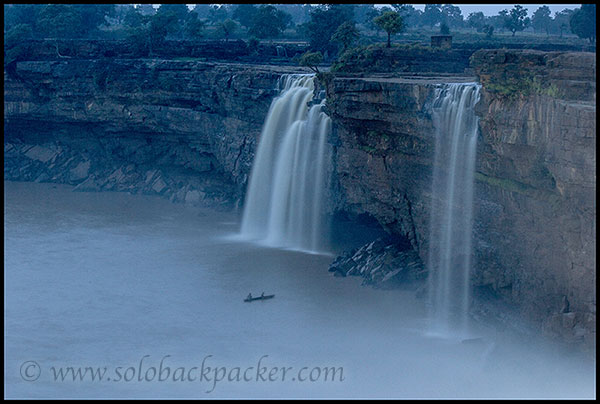
You may think that if naxalism is there, poverty is there, undevelopment is there, then why should someone visit this state? Well, the answer is: because It’s a natural beauty, because it’s a pure bliss, because it’s an adventurer’s paradise. Because, it’s Chhattisgarh: Full of Surprises. And, I am referring only the Southern Part, mainly the tribal areas of Jagdalpur and Dantewada. There are interesting places in the North also, that includes the incredible destinations like Sirpur, Mainpat, Sarguja etc. These destinations are sufficient enough to draw a large number of visitors every year. But, still, the state is not a rockstar of the tourism sector. The only reason behind this is the threat of naxalism, that often scared away the people from this state. However, in reality, this state has many reasons to plan a visit, even in the red corridor of naxalism. Check out my reasons that why should you visit the tribal planet, especially during the monsoon season:
1. To believe that Chhattisgarh is a perfectly safe destination: After spending six days in Chhattisgarh and visiting places like Sirpur, Banrwapara, Kanker, Dantewada, Jagdalpur, Chitrakote Waterfall, Tirathgarh Waterfall etc, I only find that Chhattisgarh is as safe as any other destination in the world. I believe that every destination has its own safety net and venturing out beyond that safety net is always a risk..Doesn’t matter whether I am in Delhi, in Leh or in Jagdalpur. The only thing that matter is the size of that safety net, which varies in terms of the area to be explored as well as the time of travel, for example, in Delhi you have more flexibility than in Bastar. In Delhi, you can try to explore each and every street till the midnight (I believe, it’s riskier after that), while in Bastar, your visit is limited to the main city and nearby villages, that too before the sunset only. So, while travelling in the tribal belt of Chhattisgarh, it is very important to know about your safety limits to avoid any misadventure.
Transport Options: The highways in Chhattisgarh are well-maintained, tourist sites are very approachable and people are very kind. Even most of the India’s safest destination don’t have as smooth roads as in Chhattisgarh. All types of public transport are available to travel freely and safely across the state. Taxi drivers and tourist guides are knowledgeable and friendly, and in case of any need, The Chhattisgarh Tourism Board is very approachable. Regular AC as well Non-AC sleeper buses are easily available from the capital Raipur to the destinations like Jagdalpur and Dantewada, even during the night time. A railway line also passes through the tribal belt to connect Raipur with Visakhapatnam.

2. To explore some of the most mesmerising landscapes in India: Chattisgarh offers some of the most breathtaking landscapes in India. Be it a flat widespread lush green patches of paddy fields, a road-side lotus pond with the bloomed flowers in the midst of thick lotus leaves, the pristine beauty of unexplored forests or the majestic waterfalls, landscapes keep changing at regular intervals to excite a traveler within you.

The most beautiful thing about these destinations is that many of them are not a big crowd puller as of now. Did you ever hear the name of Barnawapara Wildlife Sanctuary or Kanger Valley National Park? Many of us don’t know about them. These forests are one of the few spots in India..still unexplored and untouched. The safari trail in the forests passes through the rich and lush green vegetation of Sal and Teak trees. The major wildlife includes the animals like Wild Baffalo, Sloth Bear, Flying Squirrels, Jackals, Foxes, Black Bucks, Bison, Nilgai, Monkey and the birds like Parrots, Bulbul, Maina, Wood Peckers etc. Leopard sighting is also there and people also claim about the Tiger Sighting, but that is very rare. Don’t go in these forests to sight a tiger, but to get an exciting and rewarding experience of mixed wildlife, birds and peaceful surroundings.

If possible, visit the state during the monsoon season to witness some of the majestic waterfalls in India. Chitrakote Waterfall is considered as the India’s own Niagra because of its width and sheer size during the monsoon season. Spend few minutes in the late night and hear the sound of falling water to delight your soul. Late night…Don’t worry, its perfectly safe unless you do any misadventure, no security or burglary threats and adequate lighting is also there. We stayed there upto 11.30 PM to get mesmerised by an experience of the lifetime. During the daytime, you can hire a boat to explore the lake area under the waterfall.

Situated in the Kanger Valley National Park, the giant cascaded Tirathagrh waterfall is another impressive waterfall in India. Stand in front of the falling water to feel alive with the splashing water droplets.

3. To understand the tribal lifestyle and culture: The lifestyle of the tribal people is unique and they have their own customs and traditions. It is good to spend some time in the tribal region to understand their life in a better way. At the first look, there is nothing extra-ordinary in the tribal villages. But, after spending some time with the local people, you can notice that there is a strong mutually benefited relationship between humans and nature in the tribal regions, where most of the people still survive on the forest. They have excellent skills for agriculture, textiles, wood, crafts, traditional medicine and numerous other sustainable methods of livelihood.
Their co-existence with the nature is admirable. You can find them making chutney from the red aunt, vegetable from the bamboo plant, liquor from the Mahua trees and hair pin from a local wood. They teach us an important lesson on environment protection and sustainable tourism.
Their lifestyle is very simple. They are not technology savy, however mobile phones and satellite televisions are the common things now. They do have their own vehicles, basically the two wheelers, but the bicycles and the bullock carts are still the most important means of the transportation in the remote areas.

Their typical clothes include many home-made items. A tribal woman happily posed for us to capture her beautiful hair pin, khosa, in a village.
Local Haat (weekly market) is a good and suitable place to understand their lifestyle. A group of villages has its own weekly haat. These haats have very important place in their life, where villagers come from the miles away to buy the household items, vegetables, clothes, home-made liquor etc, to meet the friends and relatives and to watch the cockfights. The vibrant colours of tribal life is easily visible in the make-shifts tents of these haats.

In a village, a tribal man of Dhurwa tribe showed us the process to capture the red ants from a high tree. We walked for 2 kms in a deep forest to sight the nest of these red ants. After capturing the red ants, they are crushed and mixed with chilli, ginger and salt. The dish, Chapda Chutney of Red Ant, is an important item of their daily meal that typically include other items like rice, dal and very delicious Aamath.

Home-made liquors of many types are also an important part of their daily routine. They drink more liquor than the water in the various forms. In fact, this is the main reason why you find mostly women working in the fields as well as in the house. Most of the men remain drunk throughout the day and don’t do any work. The most common form of liquor are made of Mahua flowers, but Tadi and Salfi are also very popular.

4. To Enjoy the famous Bastar Dussehera: Mata Danteshwari Temple in Dantewada is one among 52 Shaktipeethas. Dedicated to Goddess Danteshwari, this temple was built in the 14h century by the Chalukyas. It is believed that the daant (teeth) of Goddess Sati felt here during the Tandava Nritya (dance) of Lord Shiva with her immolated body.

This temple is very sacred for all the tribal population. All the tribes from the Bastar region gathered at Mata Danteshawari Temple on the occasion of Bastar Dussehera to perform various rites and rituals. This festival is continuously celebrated for 75 days. In fact, the construction of the chariots starts much earlier than the actual festival time. If you want to see the colourful rituals, folk dances, vibrant culture and lively crowd of the tribal people at a single place, then the Bastar Dussehera is the right time to visit this area.
5. To explore the ruins of Barsur: The town of Barsur is famous for its ancient temples. Once, there were around 150 temple in this town, but now only 5-6 are remaining in the ruined state. The archaeological department is continuously struggling to protect the legacy of these temples. It’s not a popular site, so you may not find any visitor to these ruins except some locals.
The Battisa (Battis: Thirty Two) Temple is a 32-pillared temple dedicated to Lord Shiva. 8-pillars in 4-rows make an impressive corridor for the temple. The both sides, left as well as right side of the corridor, are adorned with a separate beautiful statue of Nandi and a kalash pot. There are two inner sanctum in the temple, thus making it a twin temple. The each inner sanctum has a beautiful Shivalinga inside it. The shape of these shivalinga’s bases is also very unique.
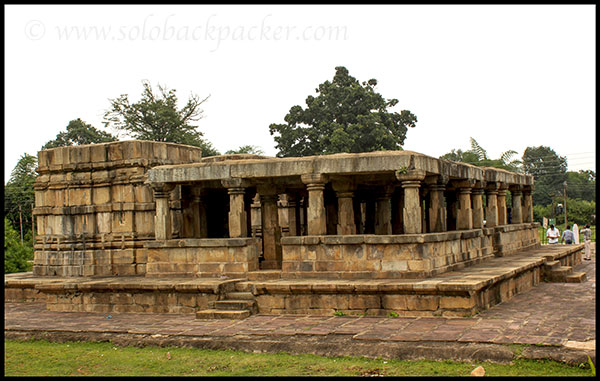
Another important temple in Barsur is the twin temple of Lord Ganesha. Two giant monolithic statues of Ganesha (one is about 5 ft tall, while other is about 6 ft tall) are kept there side by side. Earlier, these statues were kept in the open courtyard, but now they are inside a covered enclosure. Lord Ganesha is the first god to be worshipped at the religious occasion and considered as very kind-hearted. Interestingly, here in Barsur, he carry an axe in one of his four arms making these statues very unique in India, where you can see him in a warrior form.
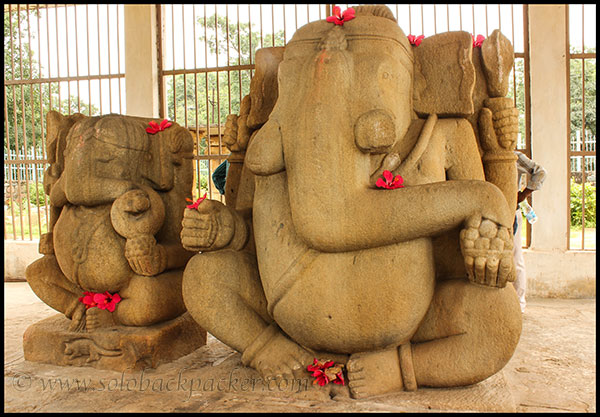
6. To learn about Dokra (Bell metal) art and other local craft: The tribal planet of Chhattisgarh is a home to some of the most ancient, yet breathtaking local craft in India, that includes Dokra (Bell Metal), Terracotta, Bamboo craft etc. Dokra craft is a unique way of metal casting with 80 percent copper and 20 percent tin. The entire process of Dokra art can be understand at one of the many shops in Kondagaon. Most of these artists of Ghadwa tribe are carrying the legacy of these crafts from the generations and many of them are national awardees.
8. To understand the complicated life of the tribals: Tribal people are very peaceful and kind-hearted. They live in their own world, enjoy their life in their own way and do not interact very often with the outsiders. They have their own festivals, their own moments of celebrations. The tribal dances are unique and beautiful ways to feel happy and to enjoy the life at various occasions. The style of these dances vary from one tribe to another, so there are many type of tribal dances in this region. During our visit to the tribal planet, we also enjoyed some form of tribal dances like Karma Dance, Gedi Dance etc.
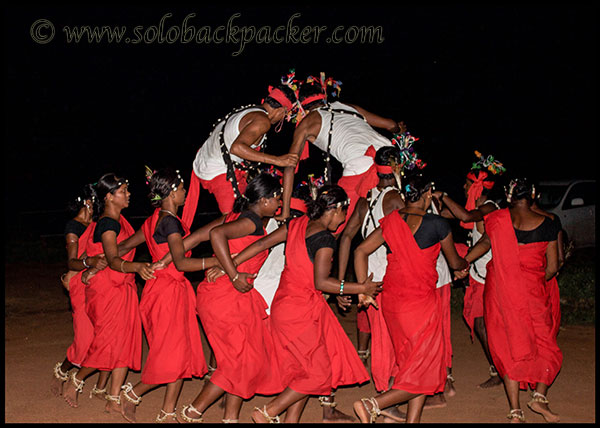
While watching these type of performances, one can often think them as the most happiest people on the planet. But, reality is far from these delightful performances. People do enjoy their folk dances, their festivals, their traditions, but they also face the problems like poverty, naxalism, poor education, poor health system and malnutrition. We found very few healthcare centers during our visit in this region. I heard that the deep forests of the Bastar region are still unsafe to explore, so my trip was restricted to the outskirts of the forests only. The villages, I visited are just like any other remote villages in India and the people there are like any other villagers in the country. The only difference is that majority of them are still poor.
While other villages in non-tribal areas are progressively inducting in to the modern world practices, in the tribal areas of Chhattisgarh, they still love their isolation, away from a technology-dependent living of the modern era. Although, the technology is slowly penetrating its way through the satellite Televisions, Mobile Phones and well-paved roads, but it will take some time . Till that time arrives, these villages are the hot-spots of ancient culture, unique customs, exciting stories and amazing crafts.
When the government is trying to boost the tribal tourism in the region, there are a grave danger to their ancient culture and traditional lifestyle due to the increasing intrusion from the outside worlds. The increasing interaction with outsiders has many potential problems. It sometimes create the major conflicts of interest leading to the exploitation of these people and that is when the problem like naxalism arises from these undeveloped areas. The development is necessary, but it should be ecological and sustainable, else the years are not far when their traditional ways of life will disappeared surely. This is why I hope that a visit to the tribal planet provides a good insight of the tribal life and their complications.
Chhattisgarh is one of the fastest growing state in India, and the tourism is an important factor for any developing economy. This state has a lot to offer on the tourism map, but the negative image is a big hinderance for growth of the tourism sector. While the authorities are working hard to promote the tourism circuits in Chhattisgarh, there is a constant threat of the negative news related to terror. A single bad event and a single negative news can wipe out the hard work of many years. However in reality, despite of all these negative images and negative news, Chhattisgarh is enticing, captivating, mesmerising and perfectly safe. It is one of the India’s best kept travel secrets. Go Chhattisgarh to explore some of the hidden natural treasures in India.


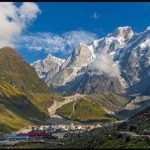





Maja aa gaya…. bahut umda.
धन्यवाद भाई 🙂
It was great to read whole article. Beautiful pictures have made me feel like going there in near future.
Thanks Dear 🙂
Very detailed post taking you on a journey through the southern part of the state.Everything which interests a tourist has been covered elaborately. Overall, an inspiring post which will compel a tourist to change his course and set it for this state. Weldone.
Thank You Sir. It was a great pleasure to travel with you. 🙂
wonderful…. can you also pls detail out the route map to these places?
Thanks. I will try to do that asap.